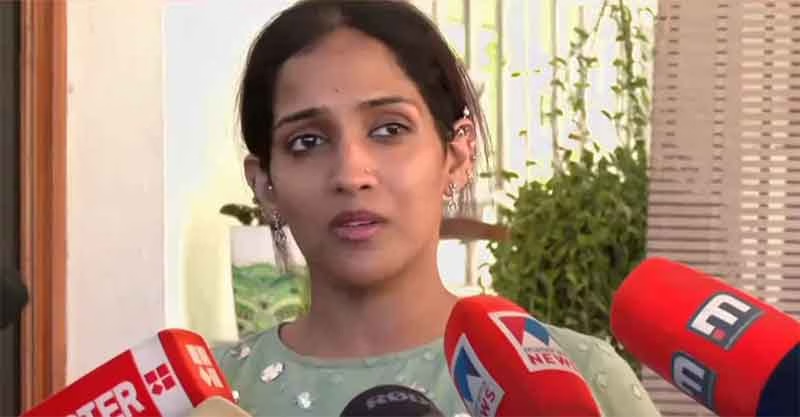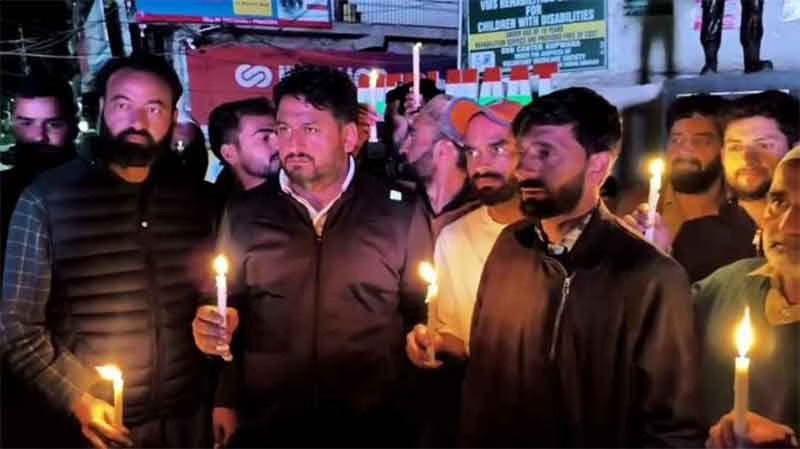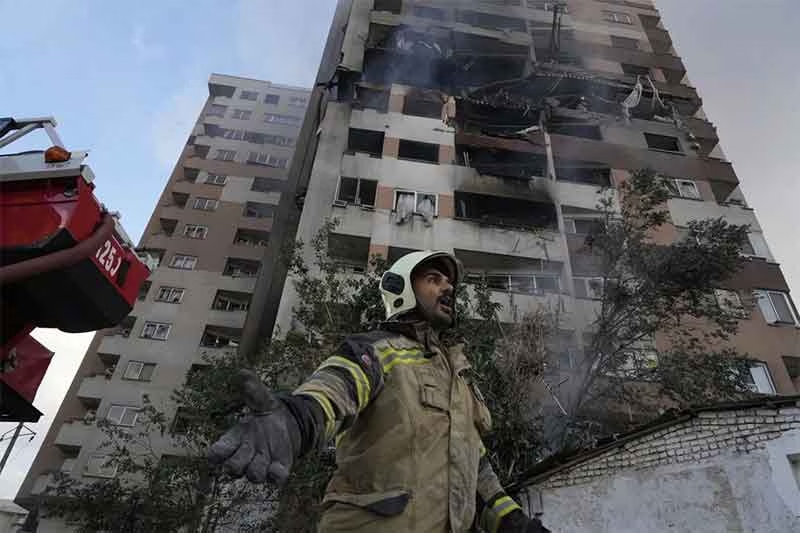This is a personal reflective commentary inspired by the story of Arathy, a survivor of the Pahalgam attack from Kerala, intertwined with my own experiences of grief and loss.

N. Ramachandran from Kerala was one of the 26 tourists who were gunned down by the terrorists in the Pahalgam attack on April 24. His daughter, Arathy Sarath, who is also a survivor of the attack, addressed the media the very next day after she had landed in Kerala from Kashmir. While watching the live coverage on TV, I was struck by how boldly Arathy spoke to the media. My first thought, and almost an immediate fear, was about the comments she might face for speaking so firmly. I was certain that the public would scrutinize her, question her morals, and doubt her dedication to her father — all because she didn’t break down in front of the camera. Instead, she stood there composed, articulate, and strong.
My second thought was about how people would target her appearance — her clothes, maybe even her lipstick — especially knowing how obsessed Malayalee men can be with putting women down just for wearing lipstick. I knew they would question how she could look “put together” a day after losing her father, as if grief and grooming can’t coexist. Later, I came back to the comment section of those videos to sadly see the hate comments starting to surface, just as I had feared.
It hit close to home because I went through the same kind of scrutiny three years ago when I lost my father. I still remember how people — even family — commented on me and my mother, not with compassion, but with judgment. There’s this unspoken expectation in our culture, especially for women, that grief must be loud and theatrical to be seen as sincere. People want to see tears, hear wails, see uncombed hair, and untouched meals. Anything less is somehow “insufficient grief.” My mother’s dedication to my father and my commitment to the family were cross-questioned directly and indirectly by the people around me.
I remember visitors looking at us with a kind of silent judgment, exchanging glances as if we weren’t grieving “correctly.” Being in the room felt like I was breathless just from the presence of these people and their judgment. Some even compared us to another mother and daughter who had experienced a loss in our family around that time. “They couldn’t even eat, couldn’t get out of bed,” they said, as if that were the gold standard for mourning.
The society which follows a patriarchal norm imposes a gendered expectations on grief, demanding that women display grief in a certain way. Women are expected to express grief visibly, as if any other form of mourning is insufficient. If they don’t comply with these expectations, they are often labelled ‘cold’ or ‘heartless.’ Women have long been stereotyped as emotional beings or even ‘drama queens’ by our misogynist society. But the same society also demands that women perform dramatic displays of grief when mourning.
Meanwhile, one also needs to understand how a man would be judged if he were the one shedding tears and breaking down. He would have been told ‘not to be like a woman,’ maybe. On the other hand, men who remain cold or withstand without any public expression while grieving are often applauded for their strength. While that does not come for women in grief. This is a maze that patriarchy sets for women; the one who cries becomes ‘hysterical,’ and the one who does not go for any public expression is tagged as heartless. How ironic is that?
In the video of Arathy talking to the media, there were comments surfacing on how she was dressed well and questioning if she had actually dressed up for an occasion when her father had passed. I could very much relate to this comment, as I was asked to change my clothes — to wear a salwar instead of the palazzo and top I had on — just so I would look like I was the daughter who was grieving and the people would feel comfortable watching me. In both situations, this can be viewed as how women’s appearances or costumes are policed by society, even when they grieve. This reflects the broader issue of misogyny and moral policing, which extends from public spaces to family dynamics, particularly in how women are expected to perform grief.
The dress they wear, the makeup if they have any, their body language, their voice modulation — all of it becomes a factor for people to bring their judgment and scrutiny, as if a woman’s body is public property, even when one is going through an extreme personal loss. This is not only a performance of the grief expected from women by the patriarchal society but also about controlling a woman’s autonomy to wear what she wants or how she wants to present herself, including her emotions. It’s important to understand how patriarchy controls a woman’s agency in grief, erasing her identity during a personal crisis.
These misogynist ideas that persist in our patriarchal society want women to perform grief in a way that reinforces the notion that women ‘shrink’ while they are in despair or sorrow. While the men in our society are freed of these expectations — they have the ‘agency’ to grieve privately, without facing the backlash women face for displaying their emotions. Men are not subjected to these gendered expectations — they can grieve privately, while for a woman, that is not the case, and she is expected to do it in public spaces. If not, she is policed.
Meanwhile, men who do this receive empathy from the people without expressing any form of grief, unlike their women counterparts. There is a clear formula set out for both genders on how to ‘perform’ grief correctly and hence be treated accordingly. There is an inherent violence in this uncharted norm on how to grieve for women in such a personal crisis. It is one’s gender that determines if one needs to be treated with humanity or empathy while grieving. Here, even while grieving, women are not given the choice to grieve however they want to, but rather the defined norm of grief is imposed by society, which is very oppressive.
Grief is such a profoundly personal experience, yet society often tries to mould it into a performance — as if sorrow must always look a certain way to be considered “real” or “respectable.” The expectation that grief should be loud, messy, and visible — with unkempt hair, unwashed faces, and overt suffering — is a deeply harmful stereotype, especially for women. And that burden does not fall on men who are grieving. It is even worse when people are so quick to weaponize things like composure, strength, or even makeup as proof that someone must not be mourning “enough.”
Subscribe to Our Newsletter
Get the latest CounterCurrents updates delivered straight to your inbox.
What hurts the most is that people often fail to see the courage it takes to stand in the middle of heartbreak. Strength in grief isn’t a sign of detachment — it’s survival. Sometimes the deepest pain is the quietest. Just because someone isn’t crying doesn’t mean they’re not breaking inside. There is no right way to grieve. There is no wrong way either. There is only one’s own way.
Shruthy Harilal is a research scholar at IIIT Delhi, specializing in caste, gender, rituals, and the intersection of gender and movies. She is currently pursuing a PhD in Sociology, with a focus on the Theyyam ritual of North Kerala.
















































